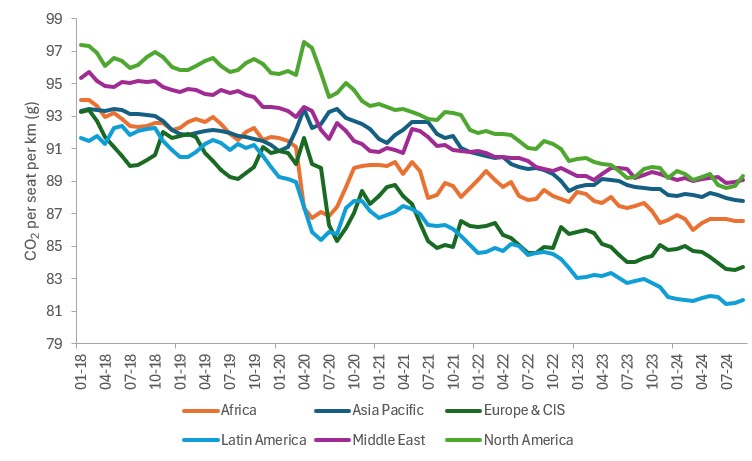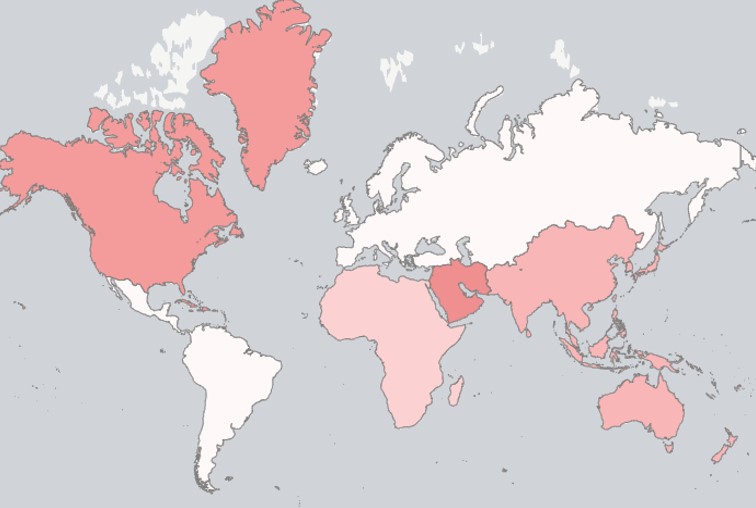IBA reports increase in aircraft emissions efficiency

Above: A graph of CO2 per Available Seat Kilometre (ASK).
Courtesy IBA / Source: IBA NetZero
IBA’s latest data indicates a major improvement in global aircraft efficiency from 2019 to 2024, with CO2 per ASK declining between 4.1% and 10.1% from 2019 to 2024, as airlines introduce more efficient aircraft into their fleets.
This data was recorded using IBA’s NetZero platform, including its IBA NetZero Reporting tool, an extension of IBA NetZero which this month won the 2024 Airline Economics Sustainability Innovation Award at the Growth Frontiers event in London, following its success in winning the 2023 Sustainable Technology Award.

Above: A map of average aircraft carbon intensity in each region.
Courtesy IBA / Source: IBA NetZero
Latin America is at the forefront of this change with a 10.1% improvement of 90.9g of CO2 emissions per ASK in 2019 to 81.7g in 2024.
However, the recovery from the global pandemic has also exposed regional variations in flight efficiency, with Asia-Pacific recording the smallest improvement of 4.1% from an average of 91.8g CO2 per ASK in 2019 to 88.1g in 2024.
In Europe, emissions fluctuated over the five-year period but ultimately saw a 6.9% reduction in 2024 compared to 2019, dropping from 90.5g in 2019 to 84.3g in 2024.
Jennifer Stanley, ESG Manager at IBA, commented: “IBA’s latest data demonstrates that aircraft fuel efficiency is improving due to better technology and operational practices. However, discrepancies exist between countries due to varying investments in new aircraft as a result of regulatory environments and economic factors.
“We remain dedicated to supporting aviation stakeholders to effectively capture and monitor their sustainability targets with precision and efficiency, leveraging our innovative solutions for detailed reporting, including our award-winning IBA NetZero Reporting tool.”
IBA NetZero Reporting enables its users to maintain an exposure portfolio over time by easily and reliably accessing emissions reports at the airline, lessor, aircraft, or fleet/portfolio level using a wide variety of measurement metrics. These include well-to-wake CO2e, RPK, RTK – total, passenger, cargo and belly, Co2e per RTK / RPK, fuel burn and number of flights. Exposures between specific dates can be measured enabling users to calculate them precisely and accurately.
The platform has been designed to enable aviation stakeholders who have very little access to actual aircraft fuel burn, such as investors and financial institutions, to capture and report their exposures simply and efficiently. It is designed to satisfy all reporting use cases in one platform, so users do not have to source their data from individual operators and lessors.












